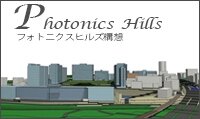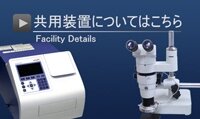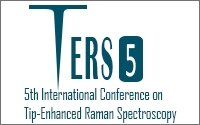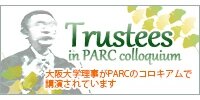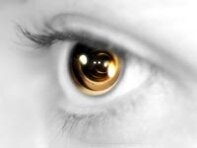|
Last year my eyesight suddenly worsened, deteriorating to less than 0.1 vision even with correction.
When I went to the doctor to find out what was wrong, I was told the eye lenses were distorted. Surgery was performed immediately to partially remove the lenses and insert artificial ones. During the operation, the movement of the eyeballs was stopped, but the operation began with my seeing as I normally see. Then it felt like I was inside a tunnel of light. When the bandages were removed three days after the operation…everything looked distorted! A 350ml can of beer on the supermarket shelf looked like a mini-sized 250ml can. I felt cheated. Was the surgery a failure? Would my eyesight remain this way for the rest of my life? At the time I was fairly depressed about the situation, but now—more than six months later—it’s absolutely no problem. That’s right, you get used to it. The performance of the human eyeball (lens) is essentially not very good—in fact, it’s said to be inferior to that of a QuickSnap disposable camera or even a toy camera. At the stage that an image of even a straight line is formed in the retina, the line is not clear. However, humans are capable of differentiating between straight and crooked lines. According to biologists, this is because over many years a person sees many lines and their brain learns what is a “straight” line and makes corrections accordingly. Moreover, humans use only the center of the eye lens, minimizing the effects of distortion as far as possible. To compensate, the eyeball moves extremely rapidly as the brain processes the image, creating balance. In recent years, expectations have been held for glasses-shaped wearable terminals, and in the future, a day may come where it is possible to project everything in one’s field of view from a high image quality glasses-shaped flexible monitor. When one looks directly at a certain point, the monitor automatically zooms in on that point, combining with a rear view to provide 360 degrees of vision; at first this would make you dizzy, but in six months the brain become accustomed to this new vision and it becomes indispensable…But this is not likely to happen for some time yet, is it? But if life with a 100% wearable monitor were truly to become a reality… At that time, the saying “The eyes say more than the mouth” will fall out of use as the wearable terminal will look into people’s eyes and obtain information directly. When that happens, it may truly be the age of “the eyes saying more than the mouth”.
August 18th, 2014 Kazunari Kimino, Photonics Center
|
私は昨年、急に視力が悪くなり、矯正しても視力が0.1以下になってしまいました。
病院で診てもらったところ、水晶体が歪んでいるとの診断でした。 すぐに手術をすることになり、水晶体の一部を除去し、眼内レンズを入れてもらったのです。 手術中は眼球の動きは止めるのですが、普通に見える状態で手術が始まります。 そして、光のトンネルの中にいるような感じ。 手術が終わり、3日後に眼帯を取ったところ・・・。 なんと景色がゆがんで見えるのです。 スーパーに並んでいる350mlの缶ビールが250mlのミニ缶くらいに見えてしまうのです。 なんか損した気分です。手術失敗か!一生このまま? 当時かなり落ち込みましたが、半年以上たった今は全く問題ありません。 そう、慣れの問題なのです。 人間の眼球(水晶体レンズ)はもともと性能がそんなに良くなく、 写ルンですやトイカメラより劣るといわれています。 直線も網膜に結像された段階では、 きれいな直線にはなっていません。 しかし、人は直線とゆがんだ線を見分けることができます。 生物学者によると、これは長年いろいろな直線を見てきた脳が『直線』として学習して補正しているからなのです。 また、人は水晶体の中央だけを利用して、収差の影響を極力減らしているのです。 その分、眼球を高速に動かして、脳で画像処理をして補っているのです。 近年、眼鏡型ウェアラブル端末が有望視されていますが、 将来、視野のすべてが超高画質の眼鏡型フレキシブルモニターから映し出される時代が来るかもしれません。 一点を直視するとそこが自動的にズームアップされたり、 後ろの映像が合成されて360度の視野になったり、 一見酔いそうですが、半年もすれば脳が慣れて、もう手放せなくなる・・・ ってな事は当分ないですよね。 でも、もし本当に100%ウェアラブルモニター越しの生活が実現したら・・・。 その時はもう『目は口ほどに物を言う』という諺は使われなくなり、 ウェアラブル端末が人の目を見て、目からいろいろな情報をもらう。 そんな、本当に『目は口ほどに物を言う』時代になるかもしれません。
2014年8月18日 フォトニクスセンター 君野 和也
|
Message archive >



